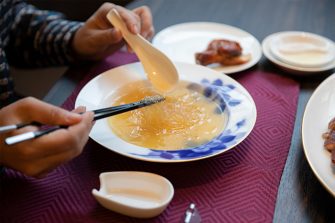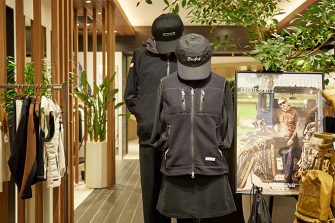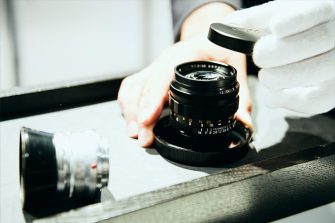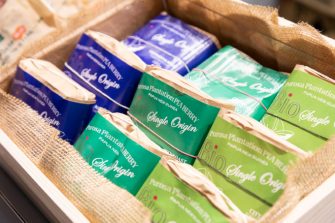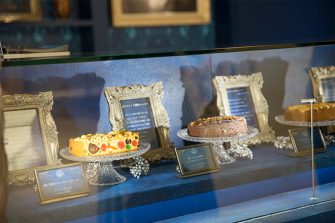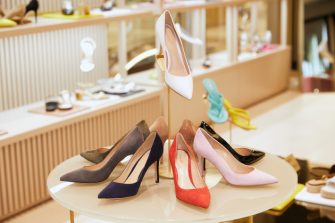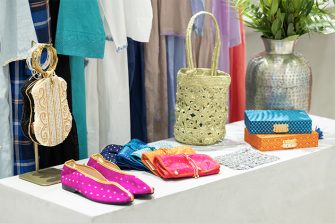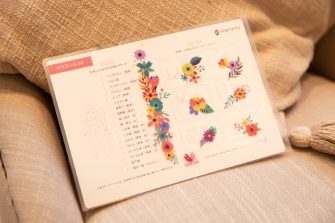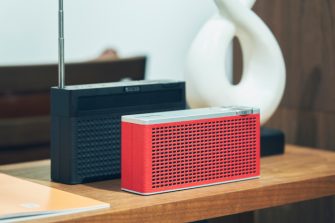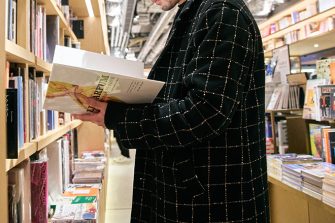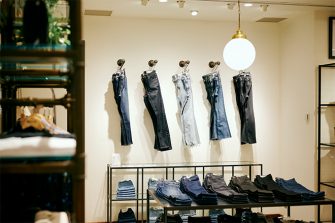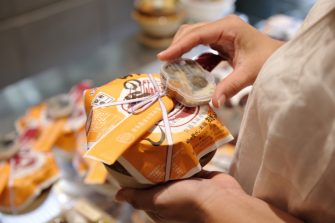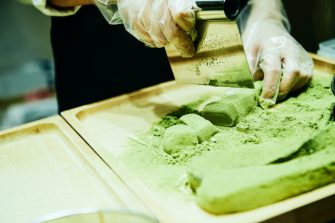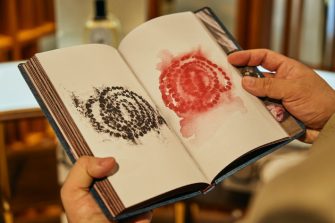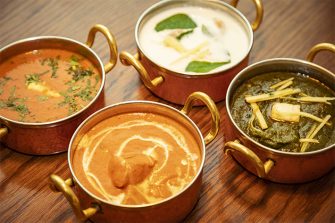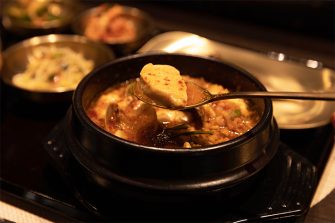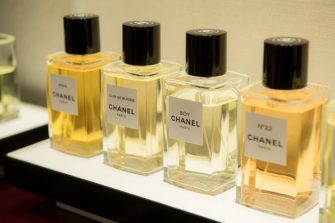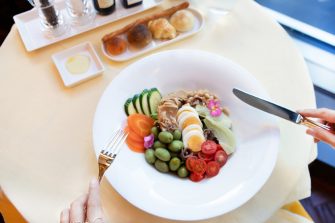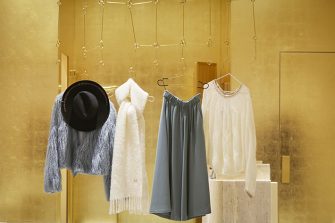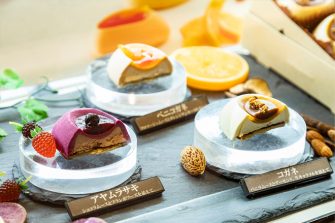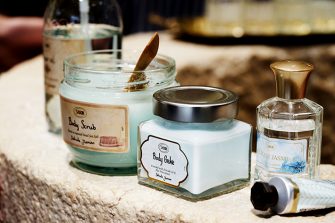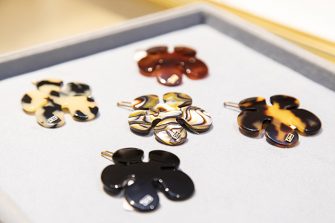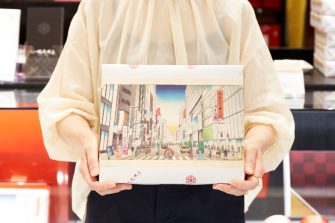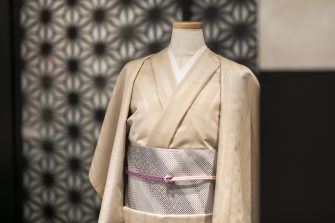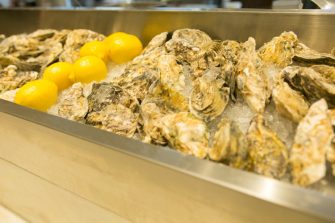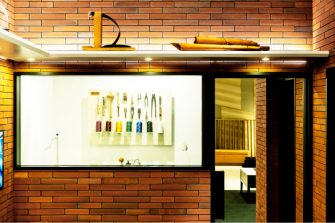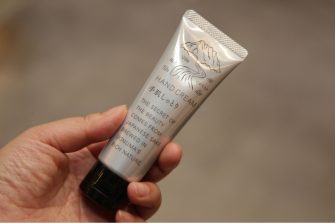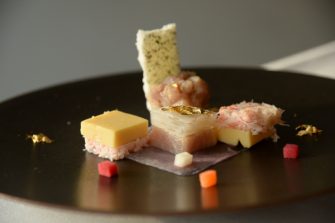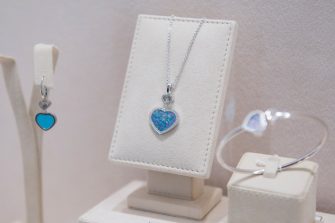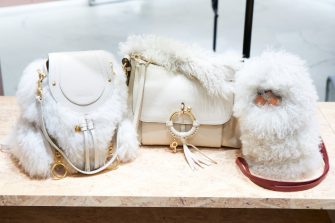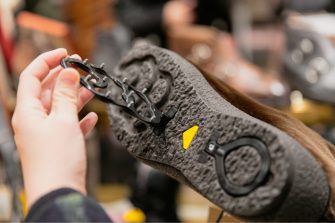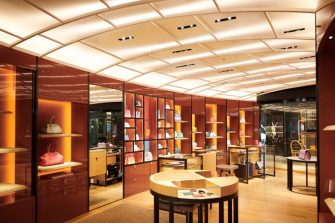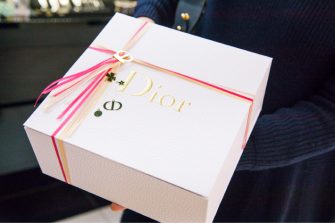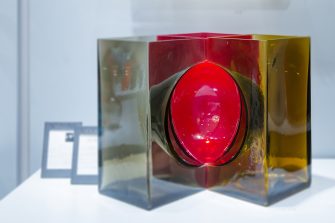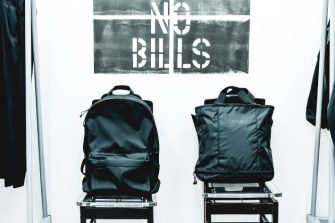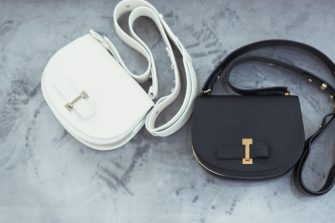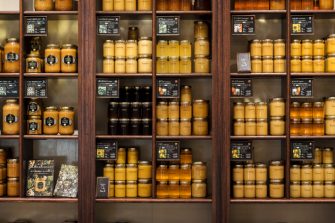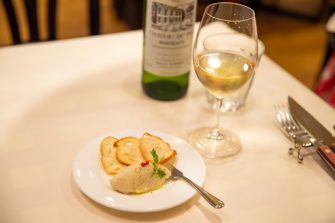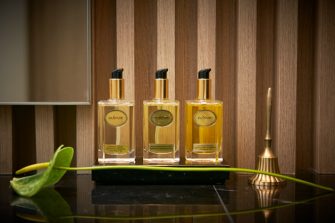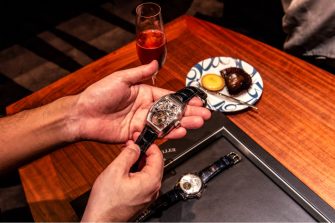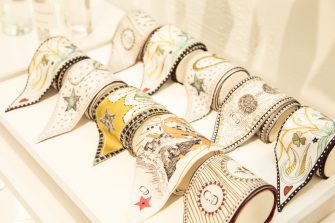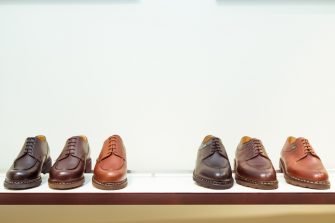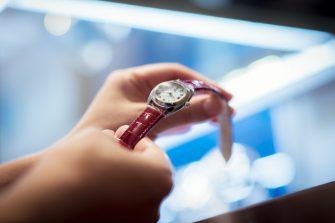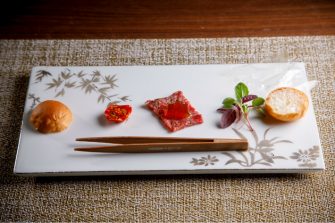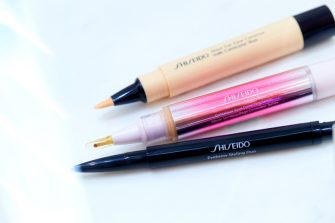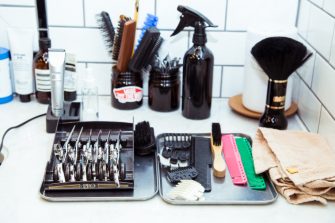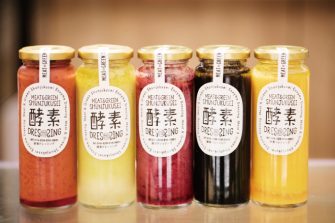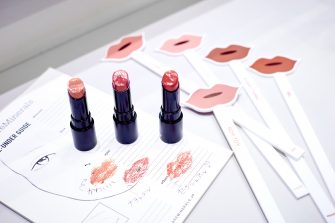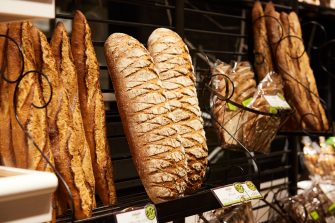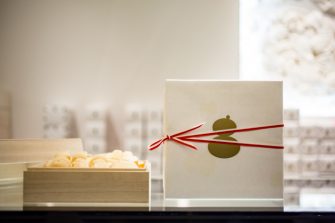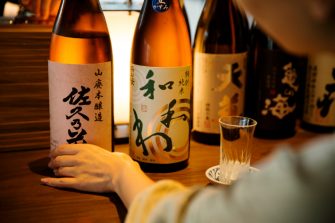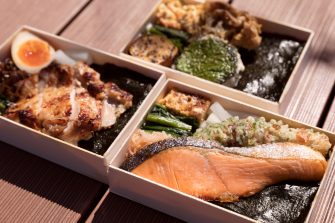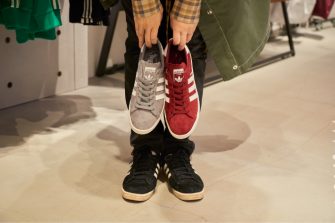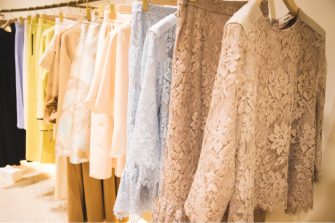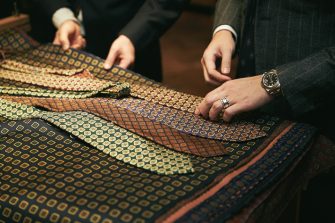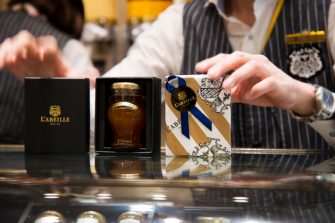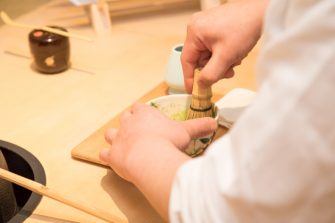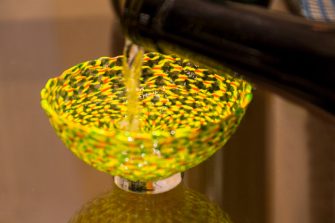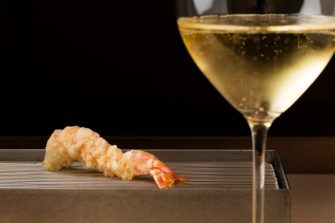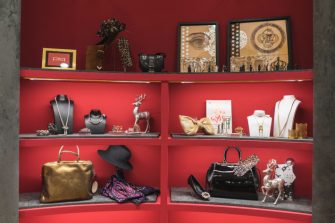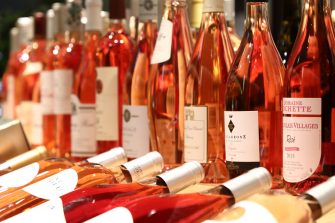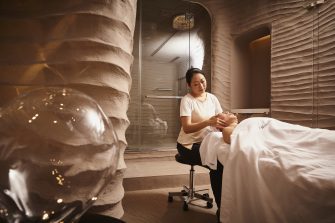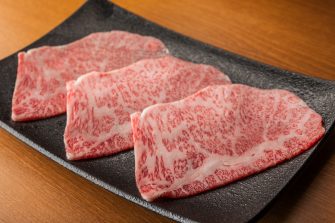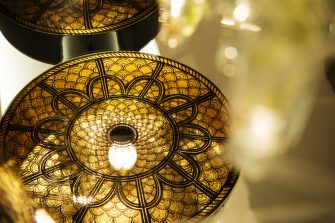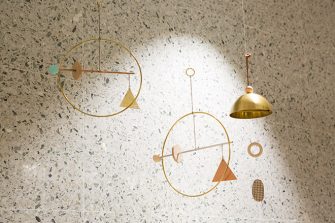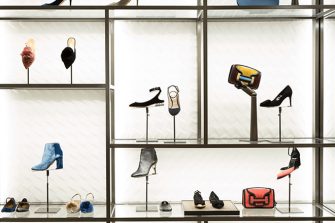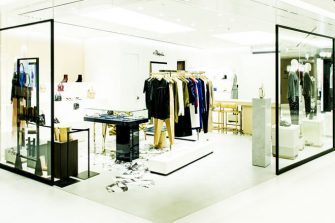

GINZA SIX EDITORS
ファッション、ジュエリー&ウォッチ、ライフスタイル、ビューティ、フード…
各ジャンルに精通する個性豊かなエディターたちが、GINZA SIXをぶらぶらと
歩いて見つけた楽しみ方を綴ります。
ワインラヴァーにとって素通りの許されない、新たなランドマーク A New Landmark No Wine Lover Should Miss
柳 忠之
GINZA SIX EDITORS Vol.18(Food)
ワインジャーナリストなどという職業を生業にしていると、「いつも美味しいワインが飲めていいですね~」と周囲から羨ましがられる。家内も同業なので、事実、毎晩の食卓にワインを欠かすことはまずない。ところがそんな我が家でも、日常ワインの在庫を切らすことがたまにある。頼りにするのは昔から決まってワインショップ・エノテカだ。
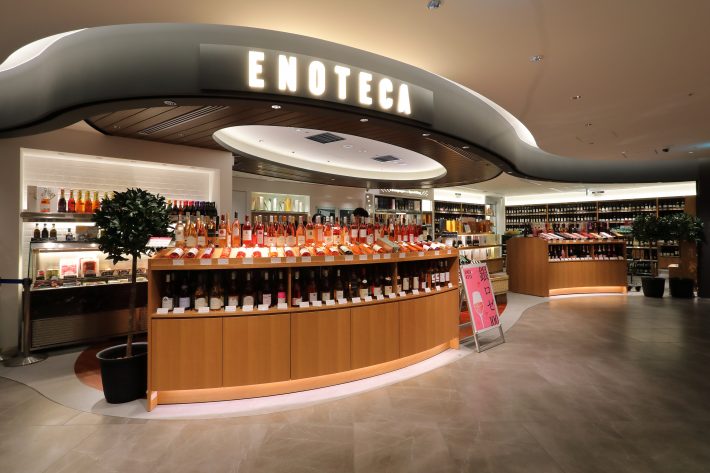
エノテカとの付き合いは長い。まだ広尾にしか店舗がなかった90年代の初め、「モンテス」のカベルネ・ソーヴィニヨンやルイ・ラトゥールの「アルデッシュ・シャルドネ」といったコスパの高いワインを買い込み、有栖川宮記念公園で花見に興じたこともある。それから間もなくして、日本全国に支店を展開。海外にまで進出し、2017年4月、GINZA SIXの開業に合わせて旗艦店を地下2階にオープンした。大躍進である。
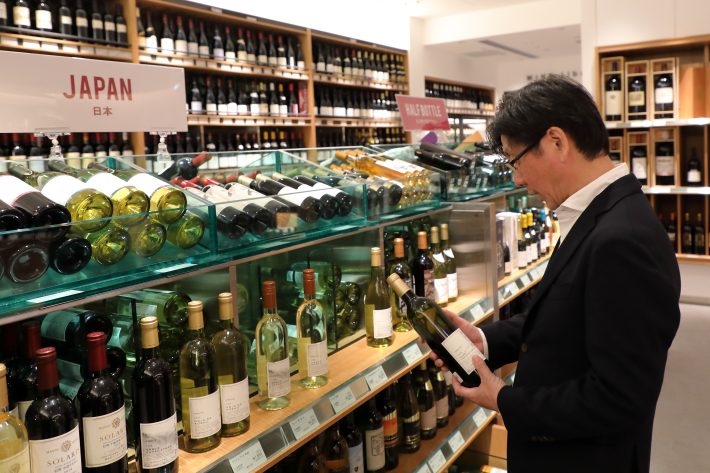
GINZA SIXのショップは旗艦店を名乗るにふさわしく、エノテカ最大級の広さと品揃え(なんと1600種類以上!)。エノテカというと、とりわけボルドーに強いイメージだが、ブルゴーニュも充実しているし、イタリア、ニューワールド、さらに近年なにかと話題の日本ワインもラインナップされている。とはいえ、話題の割にアタリハズレの大きな日本ワイン。私がもっとも信頼する山梨のワイナリー、「グレイスワイン」の甲州が産地違いで各種揃っているのはうれしい限りだ。

じつはショップに辿り着いて、真っ先に目に飛び込んで来たのはロゼワインのコーナーだった。銀座のロゼで「銀ロゼ」と題し、100種類ものロゼワインが並ぶその様は、色調の美しさも相まって圧巻のひと言。欧米ではすでにロゼワインが大ブーム。日本でもロゼが市民権の得る日を今か今かと待ち望んでいた。なんでもオープンから1ヶ月間の売り上げトップ3はいずれもロゼだったそうで、その勢いは今なお衰えないという。白と赤のいいとこどりをしたロゼワインは、料理とのバーサティリティが高く、とりわけ日本の日常的な食卓にぴったりのアイテムだと思う。
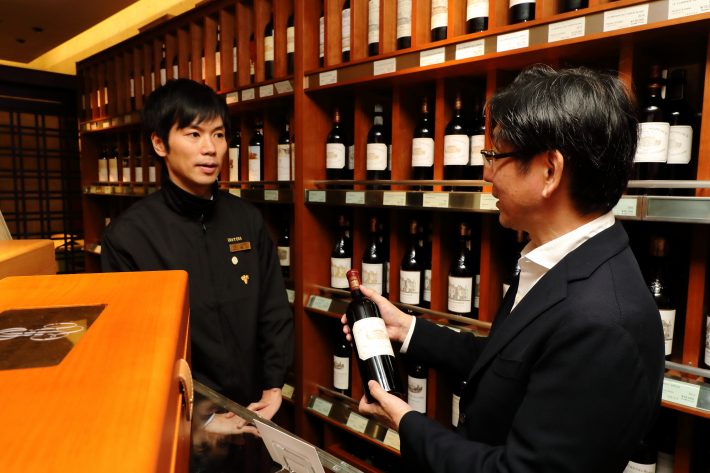
ショップの奥、格子の扉で隔離された「ワイン・ライブラリー」はお宝の山だ。「マルゴー」や「ラトゥール」といったボルドーのトップシャトー、「コルギン」や「スクリーミングイーグル」などカリフォルニアのカルトワインが鎮座する。いずれも6桁以上の超高級ワインだが、さすがは銀座、さすがはGINZA SIX、このクラスのワインもよく動くというではないか。たとえ買えずとも見るのは自由(ただし、通常は鍵がかかっているので、お店の人に声を掛けること)。偉大なワインはそのラベルを眺めるだけで、満たされた気分に浸ることができる。

地下2階のメインフロアからワインショップへと続くアプローチにはカフェ&バーがある。取材日はリリースして間もないボジョレー・ヌーヴォーから最高は2013年のシャトー・ムートン・ロッチルドまで、グラスで飲める贅沢さ。凍てつくような寒い日にぴったりのホットワインも用意されている。ピカソやウォーホルが描いたムートンのラベル画を眺めつつ、ショッピングの合間に味わう一杯のワイン。うまし。

「ドン・ペリニヨン」の吉岡徳仁リミテッドエディションやルイ・ロデレールの「クリスタル」などプレステージシャンパンが並ぶコーナーから我が家のクリスマス用に1本選び、13階の「ロムデュタン シニェ ア・ニュ」へ。
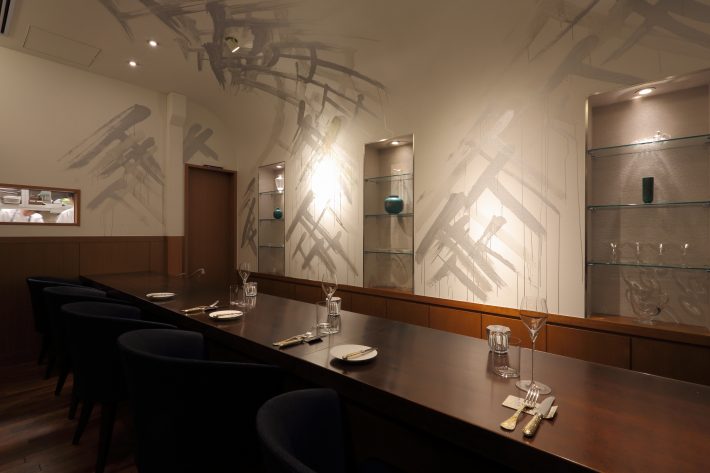
広尾「ア・ニュ ルトゥルヴェ ヴー」の姉妹店。シェフは同店のスーシェフを務めた蓑原祐一さんだ。夏過ぎに南アフリカからワイン生産者が来日し、このレストランでプレスランチが開かれた折に伺ったが、パーフェクトなマリアージュに心底感心した。
聞けば、コース料理のひと皿ごとにワインを合わせるペアリングメニューがあるというではないか。リストの中から1本のワインを選ぶのもレストランでの醍醐味だが、最近、ペアリングメニューのあるお店では、それを楽しむことが多い。ひとつには近頃のフレンチは皿数が多く、1本のワインですべての料理を通すと、必ずどこかで妥協を強いられてしまうこと。もうひとつには、ソムリエ渾身のマリアージュの妙技を味わってみたいという、好奇心からである。
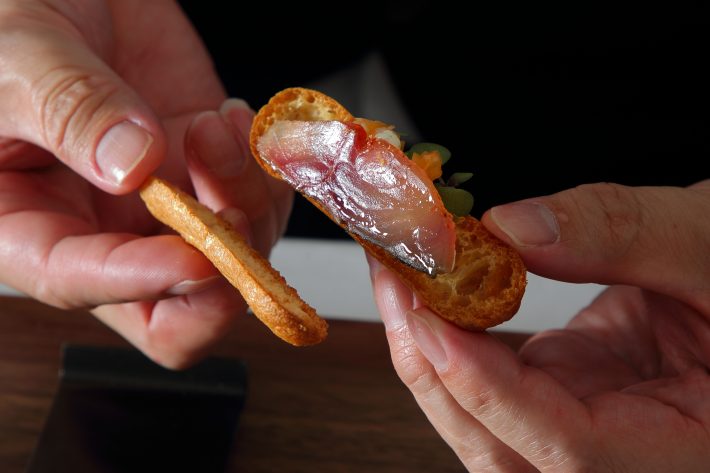
定番のアミューズは、客自ら具材を焼き立ての生地に挟んで仕上げるエクレア。この日の具材はピメント・エスプレットをまぶしたサバに、ビネガーで和えたカキとカブ、白いカボスのクリームという組み合わせ。稲毛友紀ソムリエがこれに合わせたのはシャンパーニュ、「ブノワ・ラエ」のブラン・ド・ノワールだった。ブラン・ド・ノワールとは黒ブドウのみから造られた白いシャンパーニュで見た目は白でも赤い果実のフレーバーがあり、サバの血合いの風味をオブラートに包んでくれる。
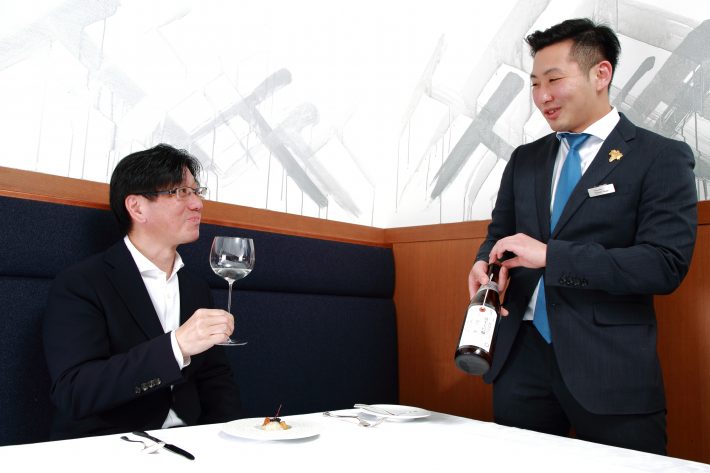
次はサクラのチップで瞬間スモークしたホタテとキクイモのタルタル。上にはキャビアがトッピングされている。そのままシャンパーニュを続けてもよさそうだが、稲毛ソムリエがおすすめするのはなんと日本酒。退潮傾向が続く日本酒業界だが、若く優秀な造り手が増えているので積極的に紹介したいという。新潟「加茂錦」の純米大吟醸。キャビアの塩味がポイントで、塩を舐めながら日本酒を楽しむイメージだとか。
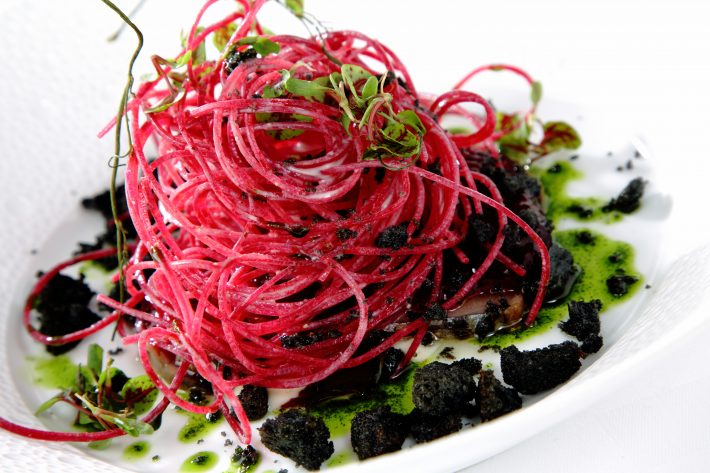
続いて備長炭でサッと炙った気仙沼のカツオのボルシチ仕立て。赤いパスタ状のものはビーツで黒いのがクルトン、緑はディル。これにカリフォルニアはサンタ・バーバラ、「ブロック・セラーズ」のカベルネ・フランを合わせる。フレッシュでエレガント、滑らかな口当たりのカベルネ・フランはカツオの血合いの生臭さも強調されず、品種特有のハーバルなニュアンスもアクセントのディルで中和される。
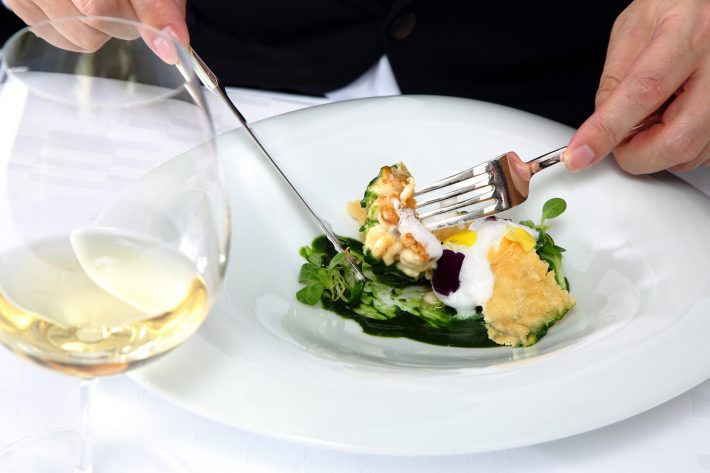
前菜にもう一品、マダラの白子のムニエル。春菊のソースにグリュイエールチーズのチップ、ローズマリーの泡が添えられている。ワインは「ドメーヌ・ド・ボングラン」のヴィレ・クレッセ。クリーミーな白子にトロリとした質感のシャルドネ。このペアリングはテクスチャーのハーモニーが素晴らしい。
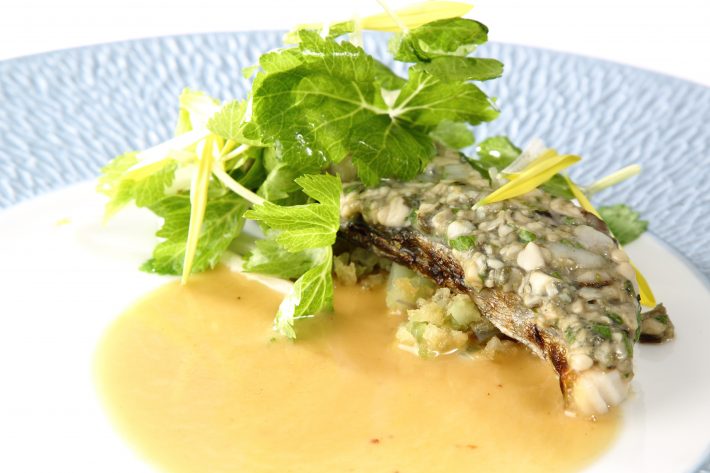
魚料理はサワラの上に細かく刻んだ牡蠣をのせ、蒸し焼きにしたもの。シャンパーニュのクリームソースと一緒にいただく。「口の中をリセットするために」と稲毛ソムリエが注ぐのはギリシアはサントリーニ島の白ワイン、「ガイヤ」のアシルティコ。ピュアな酸味とミネラル感が特徴で、口中がきれいに拭われる。それに加えてエーゲ海の潮風を感じさせるヨード感が、カキの風味と見事な調和を奏でてくれた。
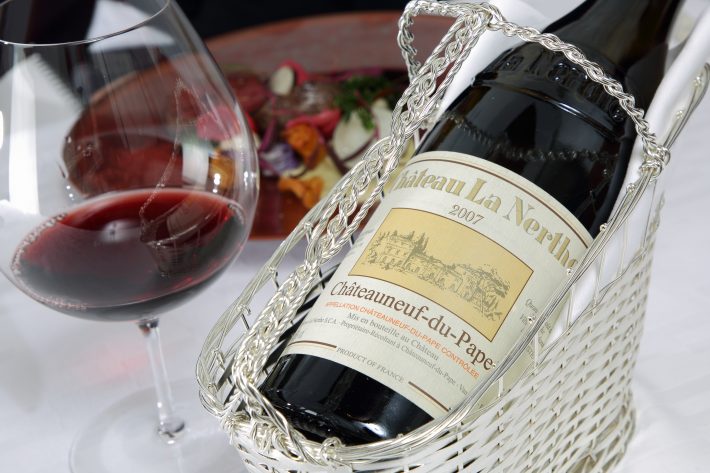
肉料理はえぞ鹿のロースト、赤スグリのポワブラードソース。前衛的に攻めた皿が続いた後、最後はクラシックな料理で締める構成。ワインも王道中の王道、「シャトー・ラ・ネルト」のシャトーヌフ・デュ・パプである。えぞ鹿の甘みとグルナッシュ主体のワインの果実味、赤い果実のフレーバーやスパイシーな後口など、皿の中の要素とグラスの中身が渾然一体化。まさに教科書的マリアージュだ。

デザートはワゴンでサービスされ、お好きなものをお好きなだけ。これでランチコース7,000円(税・サービス別)、ワインのペアリングコース6,000円の価格設定はじつにリーズナブル。次回はぜひ、家内を連れて伺いたい。マリアージュには人一倍うるさい彼女がどう評価するか楽しみだ。
自宅用からプレゼント用までチョイスに迷うほど豊富なワインが揃い、バーでちょい飲みも可能。さらにじっくりと料理とワインのペアリングまで楽しめるGINZA SIX。ワインラヴァーにとって素通りの許されない、新たなランドマークと言えるだろう。
Text:Tadayuki Yanagi Photos:Toshio Tagaya Edit:Yuka Okada
If you make your living as a wine journalist like I do, the people you know may be a bit envious and say things like, “It must be great being able to drink delicious wine all the time.” My wife is in the same profession, so we in fact never do let an evening meal go by without wine. But even at our house, our stock of everyday wine sometimes runs out. When this happens, for a long time now, I’ve depended on Enoteca wine shops.

I’ve been a patron of Enoteca for a good while. At the start of the 1990s, when it was just a single shop in Hiroo, I’d buy excellent but reasonably priced wines like the Montes’s Cabernet Sauvignon and Louis Latour’s Ardèche Chardonnay. I’d bring them to Arisugawa-no-miya Memorial Park for festive occasions under the cherry blossoms. Since that time, in no time at all really, Enoteca has become a chain with shops all over Japan. It’s even opened stores overseas. When GINZA SIX opened its doors in April 2017, it opened its flagship store on the second belowground floor. Enoteca has made great strides.

As befits a flagship, the GINZA SIX shop has the largest floor space among any Enoteca location, offering the most extensive selection (over 1,600 varieties!). Enoteca has a reputation for a marked strength in Bordeaux, but its lineup of Burgundy wines is also impressive. And it also stocks Italian wines, New World wines, and Japanese wines, which have been the talk of the town in recent years, even if Japanese wines remain very much a hit-or-miss affair. I’m pleased to see that the shop stocks the different varieties, based on the particular vineyard, of Koshu from Grace Wine, the Yamanashi winery I trust most.

When I arrived at the store, what first caught my eye was the rosé wine section. Named “Ginza Rosé” at the Ginza shop, the section features some 100 varieties of rosé wine. Together with their beautiful color, they make for a stunning sight. Rosé wine is already trendy right now in North America and Europe. I’d been waiting and hoping for the day rosé would gain some popularity in Japan. In the first month after the GINZA SIX store opened, I’m told, all top three sellers were rosé wines. This momentum hasn’t waned. Rosé takes all the best of red wine and of white wine. It’s highly versatile when paired with food, and I think it makes the perfect wine in particular for everyday meals in Japan.

At the rear of the store behind a trellised door is the Wine Repository and its treasure trove of wines. Wines from Bordeaux grand crus like Margaux and Latour, along with cult classics from California like Colgin and Screaming Eagle, are enshrined here. These are all ultra-high-end, six-figure wines, but of course you can find them in Ginza, and of course at GINZA SIX. This class of wine also moves well, you might say. But even if you don’t buy, you’re free to look (the door is normally locked, so just ask the shop staff to open it for you). Just gazing at the labels of these great wines can be an illuminating experience.

On the approach from the main floor of the second belowground floor to the wine store, you’ll find a café and bar. On the day I found myself there, one could enjoy the luxury of drinking wines by the glass, ranging from the just-released Beaujolais Nouveau to the ultimate, a 2013 Château Mouton Rothschild. They have warm wines as well, perfect for a cold day when the ground freezes. While taking in the Mouton labels drawn by Picasso and Andy Warhol, you can enjoy a delicious glass of wine during a break from shopping. Bottoms up!

I choose one bottle for our Christmas at home from the prestige champagne section, which includes Dom Perignon Limited Edition by Tokujin Yoshioka and Louis Roederer’s Cristal, then make my way to L’homme du Temps signé à nu on the thirteenth floor.

It’s the sister restaurant of à nu retrouvez-vous in Hiroo. The chef is Yuichi Minohara, who was the Hiroo establishment’s sous-chef. I’d been here once before for a press lunch held when wine producers from South Africa visited Japan and came away at that time filled with admiration for the felicity of the pairings. On asking, I was informed that the restaurant has a pairing menu that matches wines to each item on the course menu. Choosing a bottle off a list is one of the true joys of restaurant dining, but at restaurants with a pairing menu, there’s even more to enjoy. One reason is the range of dishes that characterize recent French cuisine, and one bottle of wine for all means some compromise is inevitable. Another joy comes from tasting what the experienced sommelier recommends.

An established aspect of the enjoyment is the éclairs, which the customers get to complete by putting the ingredients between the toasted dough themselves. The ingredients are a combination of mackerel sprinkled with piment d’Espelette, oyster and turnip dressed with vinegar, and white kabosu cream. The sommelier, Tomonori Inage, paired this with a Blanc de Noirs champagne from Benoît Lahaye, a white champagne made entirely from black grapes. Although the appearance is white, it has the flavor of a red and envelopes the flavor of the mackerel, as if in a wafer.

Next is tartar made with scallops, smoked briefly with cherry blossom chips, and artichokes topped with caviar. Continuing with the champagne seems like a blameless choice, but the sommelier recommends, surprisingly, sake. The Japanese sake industry’s fortunes are on the downswing, but the sommelier says that there are many excellent new producers he would like to introduce. The sake he brings out is pure premium sake (no adding distilled alcohol!) from Kamonishiki in Niigata. The salty essence of the caviar is a key point and makes the sake all the more delightful.

Next is Kesennuma bonito grilled over high-grade bincho charcoal and served with red borsch-style beets. The red comes from the beets, which are shaved in the shape of noodles. The croutons account for the black; dill accounts for the green. This is paired with a cabernet franc from Broc Cellars in Santa Barbara, California. The fresh, silky, elegant cabernet franc, with its herbal accents, a characteristic of this variety, harmonizes with the dill without overemphasizing the flavor of the bonito.

The final appetizer is Pacific cod milt meunière dressed with Gruyère cheese and rosemary meringue in a chrysanthemum sauce. The wine is Viré-Clessé from Domaine de la Bongran. A thick and rich chardonnay paired with a creamy milt—this combination makes for a wonderful harmony of textures.

The fish is Spanish mackerel topped with minced oyster, steam-baked, and served with a champagne cream sauce. “To reset your palate,” the sommelier pours me a white wine from the Greek island of Santorini, Assyrtiko by Gaia. The pure acidity and mineral flavor are this wine’s notable characteristics, and it cleanses the palate nicely. And there’s a slight iodine taste reminding of the winds of the Aegean Sea, which goes splendidly with the oyster flavors.

The meat dish is roasted venison in a red currant poivrade sauce. After a number of avant-garde dishes, then, the meal closes with a classic. The wine is a standard among standards, Châteauneuf-du-Pape from Château La Nerthe. The sweetness of the venison, the fruitiness of the Grenache-based wine, and the red fruit flavor and lingering spices in the finish—the elements of the dish and the contents of the glass are in complete harmony, a truly textbook pairing.

Dessert is served from a dessert cart. You can choose what you’d like in the quantity you’d like. The lunch course is 7,000 yen (before tax and service charge), and the wine-pairing course is 6,000 yen, so the prices are quite reasonable. I’m definitely going to bring my wife next time around. She tends to be highly opinionated about pairings, and I look forward to what she has to say.
An extensive selection of wine for every occasion, from drinking at home to presenting as gifts—so much wine it can be hard to choose, plus a bar for a few sips, and a restaurant where you can take your time enjoying food and wine pairings—all at GINZA SIX. It’s a new landmark no wine lover can miss.
Text: Tadayuki Yanagi, Photos: Toshio Tagaya, Edit: Yuka Okada
柳 忠之
ワインジャーナリスト。1965年生まれ。ワイン専門誌記者を経て、97年よりフリーで活躍。「BRUTUS」「Winart」「GQ JAPAN」などの雑誌に多数執筆。自由が丘ワインスクール講師。土壌、歴史的背景を含めた論理的観点からの鋭い切れ味ある批評に定評がある。


